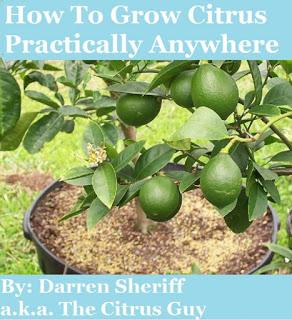Camellia season is in full swing and pretty much every weekend I have been judging and competing.
Then there is work, my new position at Hidden Ponds Nursery has been an extreme blessing!
I know what you are saying, lots of people play on the weekend and work all week! Big Deal!
You are correct!
There is one more small thing that I failed to mention that I have been doing.....Writing A Book!!

I am very proud of how this ended up coming out. Originally, it was going to be kind of a textbook on growing citrus. As I was writing it, I realized it was coming out more of how I do one of my lectures. So it is basically, a lecture inside of a book. It is 99% on growing citrus in containers, so folks up north can enjoy too.
Here is the first chapter, to give you the idea of what to expect in it.

CHAPTER 1: INTRODUCTION
Citrus.
The word itself conjures up pictures of huge groves in Florida. Maybe you think about that first morning glass of orange juice or a grapefruit cut in half as a snack.
I understand, not everybody can move to Florida or California, but wouldn’t you love to live in a place that, just outside your back door, is a tree that you can pick your own fresh citrus fruit?
This book will help you do just that!
“How to grow citrus practically anywhere” is designed to help people, who are not exactly living in prime citrus producing areas.
This book will not go into how to grow them in the ground, if you are in a place warm enough to grow it that way, there are plenty of other books out there for that. This is going to be more on container cultivation. This book will be beneficial if you have say, a large patio that you can’t plant a tree into the ground. A balcony in the city might confront you. Maybe you rent and one day will want to move, you can take them with you. Perhaps, you like to rearrange furniture or the knick-knacks in the house; wouldn’t it be fun to do that in your yard? Probably one of the main reasons you will want to read this book is if you live in a very cold place, Maine comes to mind. There are not too many tangerines being produced up there! But there could be. As long as you have a sunny, warm room, a greenhouse or a place to hang some lights and the desire to put some real effort into it, you can grow Calamondins in Canada and Mandarins in Massachusetts.
How is THAT for optimism?
Growing citrus in containers is no harder than growing any other plant. Yes, it can get big and, I will not kid you, there is a great deal of work involved. As Thomas Edison once said, “The three great essentials to achieve anything worth while are: Hard Work, Stick-to-itiveness, and Common Sense”.
This book is going to help you with all three of those.
Chapter 2 will start out with a little history on citrus. It is always nice to know where something comes from. Where it has been or how it got someplace else. By researching the origins, this also gives you a better idea of what kind of growing conditions it is accustomed to.
Chapter 3 will be all about what to search out to grow. This chapter will give you examples of the different cultivars as well as the different citrus fruits out there. Taste is so different among people; it would be impossible to describe what each tastes like. I will give you a list of what I know is good, what some of the odd things are used for, and give you an idea of what to start with.
Chapter 4 will discuss your trees home. What size pot to use, when to repot. It will give you the benefits, pro and con, to using plastic versus terracotta and other materials.
Chapter 5 will tell you what to fill those pots up with. Soil is the basis for which your plants survive. What are some of the best and worst out there, what are some of the different combinations of ingredients that can be used, why some are better than others, etc.
Chapter 6 is all about fertilizers. What to use, what to avoid and what kinds of things happen to fertilizers over a period of time. What the purpose of using fertilizers is, good and bad. It will also discuss deficiencies, what to look for in your tree and how to correct them.
Chapter 7 will be on watering and sunlight, you would think that these would be two things that are easy to supply! In containers it actually gets a little tricky. Too much sun is just as bad as too little. Water can be an enemy for a couple of reasons.
Chapter 8 really gets to the heart of the matter, protection. This is the main reason that it is difficult to grow citrus above a Zone 8. In this chapter we will discuss what the cold does to trees, other than make them cold. Ways to protect them in marginal areas. Some of these things to do will be fun; some of them easy and all will be very useful to help you in protecting them.
Chapter 9 is all about other things that want to eat your precious tree and fruit, other than you. From aphids to white fly and from birds to bird poop like creatures; we will delve into the pests that affect citrus trees and ways to avoid and conquer them.
Chapter 10 will find out what makes your tree sick. We will not cover all of the diseases that bother your trees, that would be a book in of it self. We will talk about the main ones, the ones that you might have a better chance of seeing, hopefully not, but it is best to know about them. The ways to protect your trees from the diseases and ways to rid your self of them, should they happen to appear.
Chapter 11, there are other problems that may come up that don’t really fit pests or diseases, they just kind of happen. Some are naturally occurring some can be prevented; still others just take time to fix themselves.
Chapter 12 can be summed up in one word…reproduce. We will discuss the different ways that citrus trees can be propagated, from grafting and rooting, to seed planting. Each has its merits and disadvantages. There are also varying levels of expertise used here, I will break it down to the most elementary methods possible.
Chapter 13, I will wrap this all up in a nice neat little package. I will give you the benefits of all of this, things to share with other people, and how to really have fun with your new hobby.
Chapter 14. What would a book about growing such tasty things be without at least a few of my tips on how to use your fruit?
After reading this introduction, I hope I have you excited about what is inside? The world of growing citrus for your self is a combination of many things, hard work, excitement, perseverance, and with a little luck, success! In the end it will all be worthwhile when you bite into your first, home grown tangerine!
Let’s get started!
As they say, you need to know what is in it, before you buy it! Okay, badly paraphrased, but you get the gist.
I would be honored if you would check out my website, and maybe even purchase my little venture into literature. You can get it as downloadable files or as a printed book in the mail.
The website is The Citrus Guy Hort-Books
Thank You in advance, I appreciate your time!
Happy Growing

